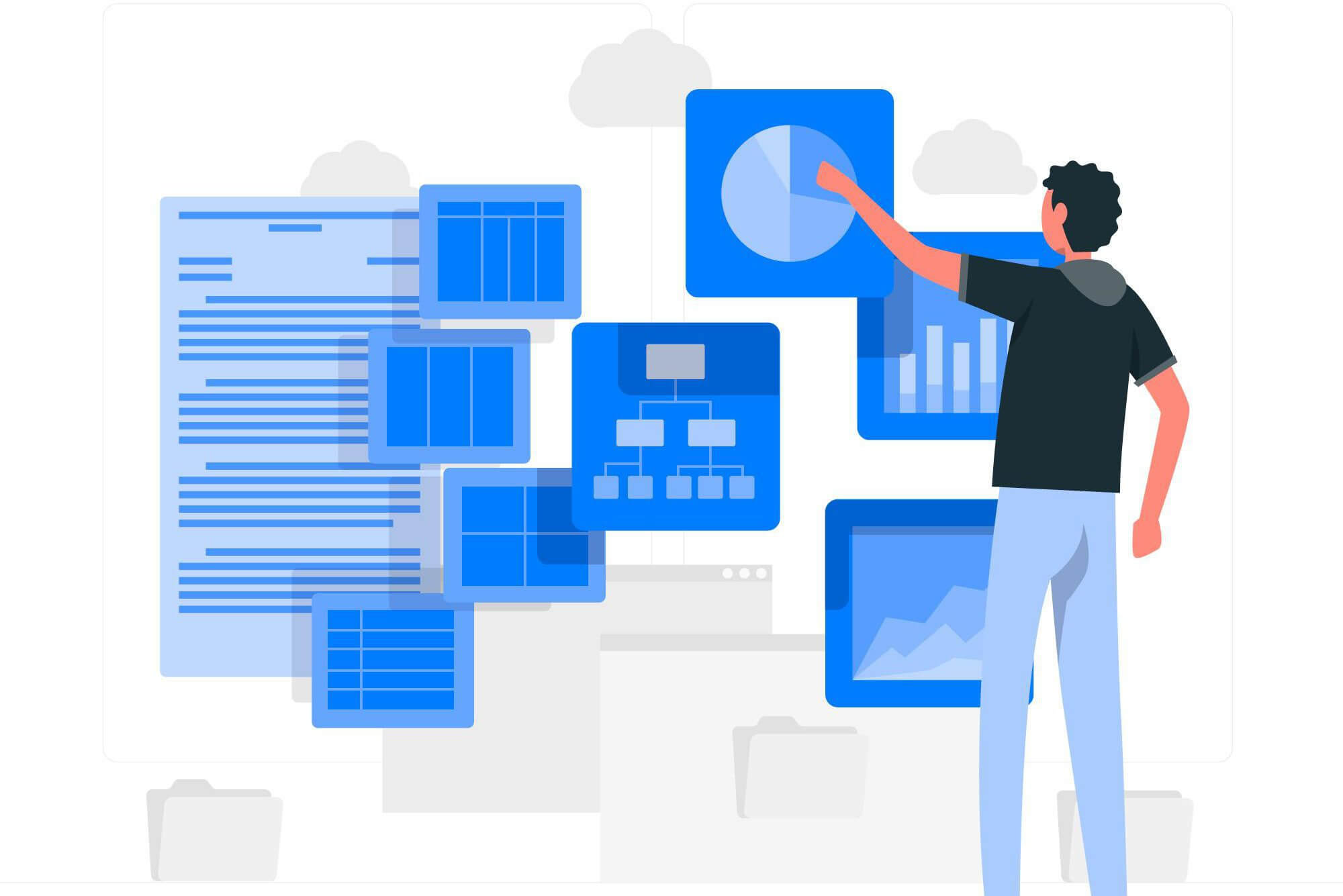All companies must secure their resources from external threats. That means making sure outsiders can’t access the corporate network. Virtual Private Networks (VPNs), have historically served this purpose with established technology.
However, Software Defined Perimeters (SDP) and zero trust networks (ZTN) are newer technologies. And they may outdo VPN. Companies are still experimenting and debating whether SDPs will soon replace VPNs altogether and whether it is beneficial for companies to use SDPs and VPNs together.
What Is A Software-Defined Perimeter (SDP)?
A software-defined perimeter is an enterprise network security system that uses software to protect an organization’s data. The perimeter is not what you think it is. It is not the border of physical property or the endpoint of an internet connection.
Instead, a virtual network perimeter defines the organization’s sensitive data and protects it from unauthorized users and external threats. Everyone wants to get to zero trust. However, it is not easy to get zero trust. A software-defined perimeter can accelerate and simplify your strategy. Experts suggest that VPN technologies might not be able to keep up.
Software-defined perimeters are becoming more popular because they are easier to manage and offer better protection than traditional hardware perimeters. They also protect both public and private networks, which most hardware perimeters cannot do as well.
A Cloud-Based SDP Solution
A cloud-based SDP solution is a software-as-a-service (SaaS) hosted on the cloud. It can be accessed from anywhere and does not require user computer installation. Cloud software-defined perimeter is a cloud computing architecture that provides different cloud services for enterprises. It can provide the same level of security and compliance as traditional perimeter devices without the hassle of on-site management, installation, and maintenance.
How Does SDP Work?
The Cloud Security Alliance initially introduced the concept of how SDP works. SDP incorporates the organization’s IT assets inside a closed network of firewalls. These firewalls prevent unauthorized users from getting access to the organization’s resources. Also, the SDP protects against unauthorized access to on-premise and cloud resources.
It establishes a secure network connection. Hence, enabling the company to work with a more remote workforce. The IT admin will establish a user identity policy to authorize which users to authorize. Even the resources will be authorized. Users cannot access all the resources.
With SDP, companies can aim towards ZTNA (Zero Trust Network Access) for better security. It doesn’t matter whether the service is cloud or located on-premise.
SDP Real-Life Applications
- Due to SDP being very flexible, it can be applied independently. You can also roll out SDPs to contracts and consultants who require only certain system access; however, you don’t want to provide broad access to network developers. You may want to avoid your developers seeing your entire source code for an application they are working on; in this case, you can limit the SDP to control their visibility within a certain development environment.
- Admin access control is another real-life application of SDP. You can only provide access to a server if there is an open ticket in your service management system.
- Compliance management is great with SDP when it comes to reporting, controlling, and limiting access to just those individuals who need to know the information and understand under what context they are accessing controlled information.
- With SDP, on-premises business operations such as call center agents can be transitioned to home-based agents. The company’s employees must not be within the organization’s network perimeter.
- The non-core operations of the business can be delegated to specialized third parties.
- Businesses can deploy company assets onto customer sites to engage with consumers and earn more income.
- SDPs are ideal for organizations that have to manage highly confidential information. SDPs have zero-trust network ability as compared to VPN technology. In a zero-trust network, verifying and authenticating anyone is very strict. The user can be from on-premises, yet they will be subject to strict authentication policies. Zero-trust models overcome the drawbacks of traditional network security models.
SDP Vs. VPN
SDP is a protocol for streaming multimedia content. This protocol is used for applications like Google Hangouts, Skype, and YouTube. It has been around since 2000 and has been updated to include features like video conferencing, group chats, etc.
A virtual private network (VPN) is a network that connects devices remotely through a private network. They are also known as virtual private networks. We can use VPNs for providing access to blocked websites and services in certain regions or countries. SDP is a protocol for streaming multimedia content.
This protocol is used for applications like Google Hangouts, Skype, and YouTube. It has been around for 30 years and has been updated to include features like video conferencing, group chats, etc. VPNs have become a popular choice for corporate networks in the last decade. However, due to the more security benefits of SDPs, organizations are questioning the further use of private VPN gateways.
Businesses may still use VPNs, which encrypt tunnels between networks and end-user devices to support remote work. However, they can be expensive and difficult to maintain. Plus, they enable connectivity for authorized users and devices, leaving security holes.
For instance, if an attacker gains authorized access with stolen credentials, for example, there is little VPN can do to stop them. SDP networks sit atop other networks to conceal them from attackers or unauthorized users, acting like a cloak of invisibility to prevent network-based attacks SDPs. SDP grants access on a need-to-know basis authenticating users to specific corporate resources based on identity policies.
Differences Between SDP And VPN:
Security
The difference between SDP and VPN security is that SDP is a type of protocol, while VPN is a way to encrypt data.
SDP stands for Secure Data Protocol, which was developed in response to the SSL vulnerability.
The protocol was designed to ensure that all data transmitted over the Internet is encrypted. VPN stands for Virtual Private Network, and it can encrypt all information sent over public networks like the Internet.
Some people are confused about these terms because they sound similar but are not interchangeable.
Network Access
The difference between SDP and VPN network access is that SDP cannot be used to access the protected network. At the same time, VPN can be used to access the protected network.
With a VPN, the users are free to roam after they get access. All that the perimeter is securing is the outside. This type of protection does not cover anything happening inside the network.
One of the major drawbacks of VPNs over SDPs is their reliance on network-centric security. This means that any remote user can access data after user authentication, thus making VPNs insecure network connections.
User authentication happens during activation and encryption from the endpoint to the VPN device. Network resources in VPNs are very visible and hence more vulnerable to attacks.
Remote Access
The SDPs approach is zero-based; hence it applies a custom policy on each user device. User authentication happens regularly and is considered trusted. It is an IT admin’s job to grant the user permission for a one-to-one connection so that the user can access the resources. The unauthorized network resources are invisible to the user.
This enables the company’s remote workers to remote access network resources as if they are working on-premises. The zero-trust security setup ensures that all network connections are secured. This is done by scanning every device and strictly monitoring the connections between central and Cloud-based assets.
Granularity
Administrators have more control over their networks in SDPs. There is no need to invest in hardware infrastructure or change anything in the network architecture. Each resource has perimeters around it that enable the creation of granular access control policies.
End-User Experience
The user experience for VPN users is unreliable. If the user has to use multiple applications in multiple data centers, it can be difficult to connect from each remote application frequently.
In contrast with SDPs, the user experience is improved. Users experience continuous access across different devices and platforms. It is easier to work on multiple applications in various data centers. No matter where the user is geographically located, they experience a much better performance via a cloud-based SDP solution.
Time And Costs
SDP is a cheaper option and does not take much time to scale than VPNs
Policy Management For Admins
SDPs remove policy management complexity for admins. Whereas VPNs cause policy and firewall management complexity. There is a lot more administrative burden when companies implement VPNs.
Functionality
VPNs have little functionality beyond encryption. While SDPs are not only used for encryption but also 2FA and SSO etc.
Benefits Of SDP Solutions
Strengthen And Simplify Access Controls:
SDP is endpoint agnostic. SDP provides security in a software solution rather than trying to configure your hardware to accomplish the safety controls. VPN, on the other hand, is linked to the physical hardware of the company; hence it does not protect resources from any private network or the public Internet.
SDP restricts network or system access only to areas you are permitted to visit. Its risk-based approach reevaluates the context of user access requirements and assigns those rights and permissions dynamically.
Unleash Operations With Integrations And Automation
SDPs allow you to isolate mission-critical systems and data for further authentication, and it secures hybrid and cloud environments as seamlessly as your own network. SDPs can integrate with multi-cloud infrastructure and hybrid cloud deployments.
Compliance tool
One of the most fantastic features of SDPs is its compliance tool. It helps you regulate access to information and create logs and reports on who is accessing that information and under what circumstances. SDP improves the process of compliance data collection, reporting, and auditing via centralized control of users’ connections on authorized devices.
Reduce Attack Surfaces
It lowers the risk of the attack surface, so if an account becomes compromised, it is very narrow and specific. It can control up to layer seven, where traditional network-based control mechanisms are really at layer two, and you can simplify your firewalls.
Flexibility
Another benefit of SDP is that it is very flexible. You can apply it individually, so you don’t have to roll it out to the entire company. You can, for instance, pick over entitled users with more access and your average user and protect them first.
Endnote
This guide provides in-depth guidance regarding the difference between implementing an SDP versus a traditional VPN gateway. VPN has many drawbacks compared to SDP, such as lack of remote user security, fragmented network traffic, cost, and being more vulnerable to hacking.
Cloud software-defined perimeter is a new method of securing enterprise networks that uses software rather than hardware. This new approach to network security is not only cost-effective but also easy to implement.
SDPS lowers the risk of attack surface by enabling the IT teams to limit authorized access based on the user, their role, and other verification details. This allows your company to securely inhabit several clouds and work with many remote workers.






